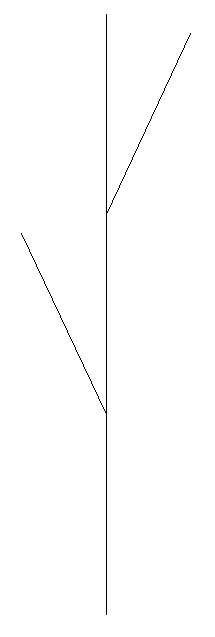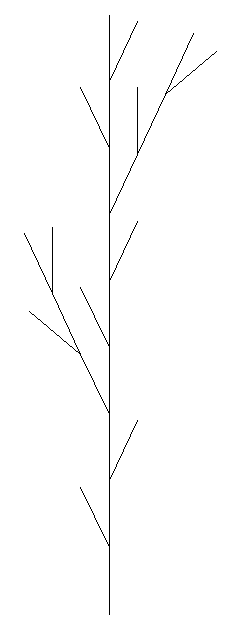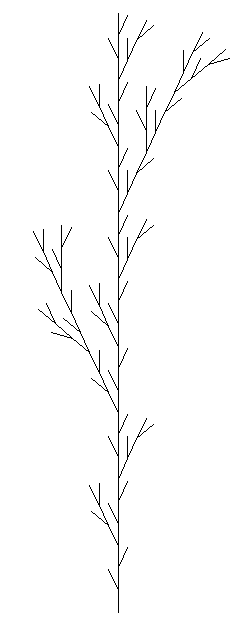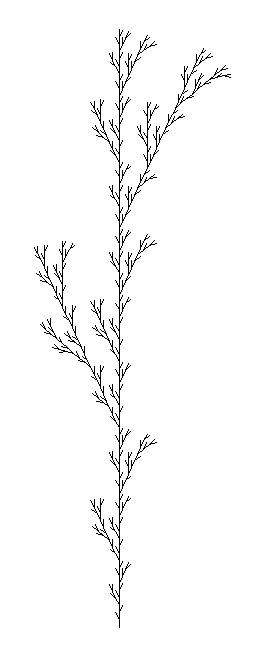Write out your answers to the starred exercises 11, 12, 13, 17, 18, and 20 from the L-system lab worksheet (Lab 2). For exercise 20 (creating your own L-system fractal), include your axiom, rule(s), and other parameter settings, as well as a printout of your screenshot.
What is the fractal dimension of the "Weed 1" L-system fractal shown below? Show how you calculated this. Hint: remember the phrase "N parts scaled by 1/M".
|
. . . |
We can create a two-dimensional analogue of the Cantor set by starting with a square and removing part of its interior, leaving behind four smaller squares at the corners. Continuing this process forever will generate a "2-D Cantor set" fractal, as illustrated below:
 |
. . . |
What is the fractal dimension of the 2-D Cantor set? Show how you calculated this.
Assuming that the area of the original starting square is 1, give a general formula that can be used to calculate the total remaining area after n steps.
What is the total remaining area of the 2-D Cantor set in the limit (that is, after an infinite number of steps)? Explain your answer clearly.
A Menger sponge (shown below on the left) is a 3-dimensional analogue of the Sierpinski carpet (shown in the middle). We start with a solid cube and divide it into 27 smaller sub-cubes, with 9 sub-cubes on each face. We then remove the center sub-cube from each face, along with the sub-cube in the very center of the larger cube, and repeat this process forever. The picture on the right illustrates the first three steps. Calculate the fractal dimension of the Menger sponge, and justify your answer. (Also check out this article for a surprising new view of the Menger sponge.)
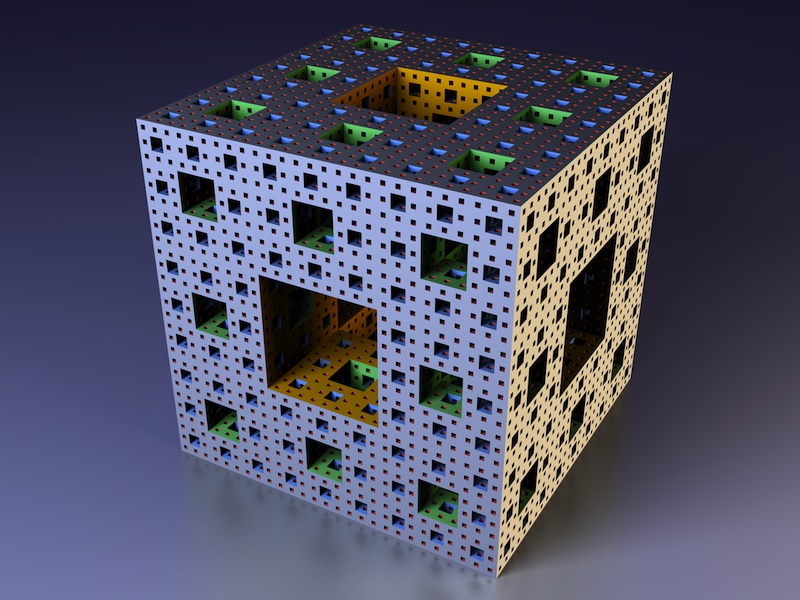 |
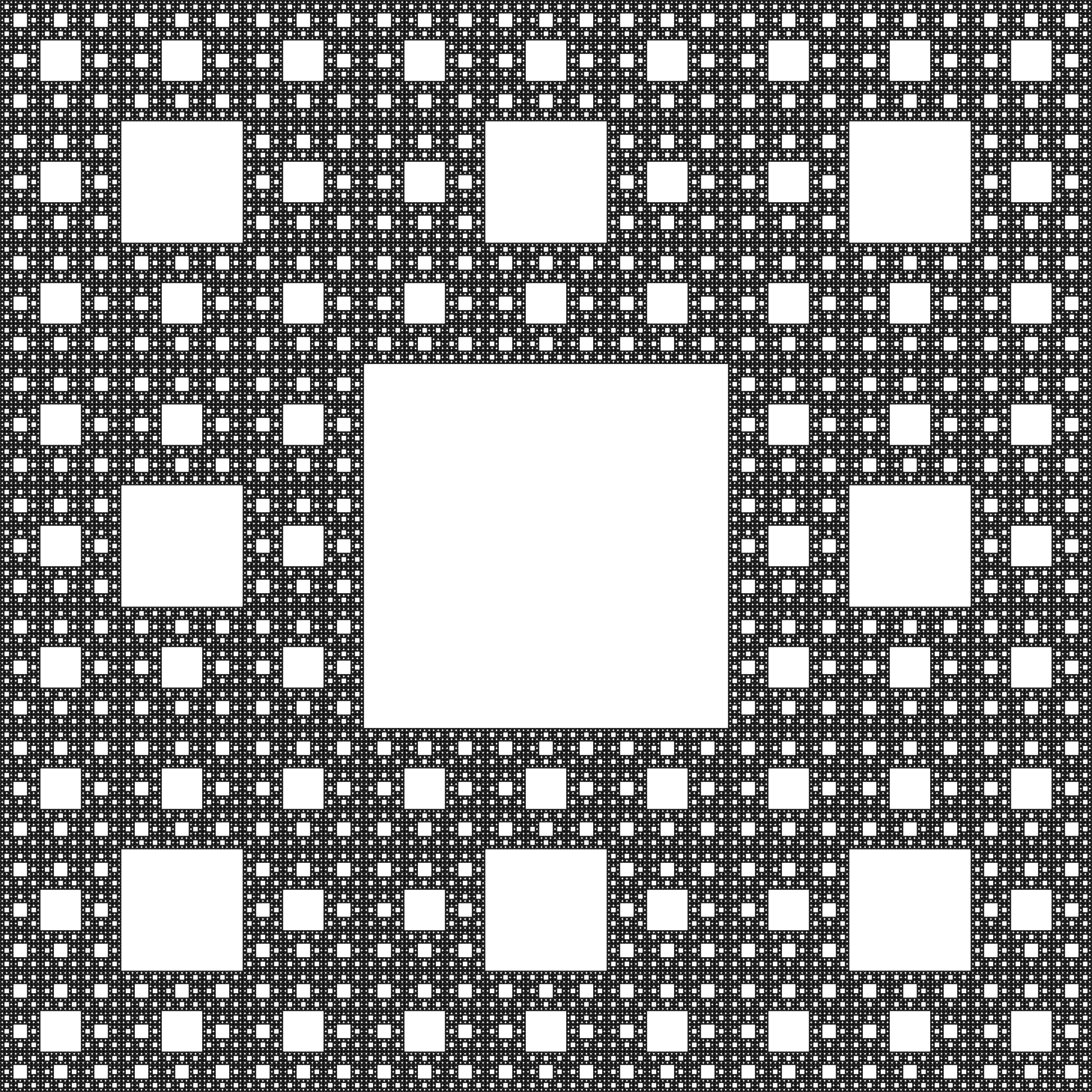 |
 |
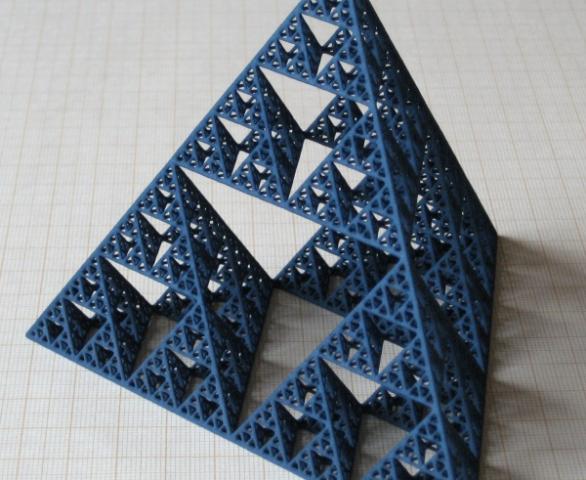 |
 |

